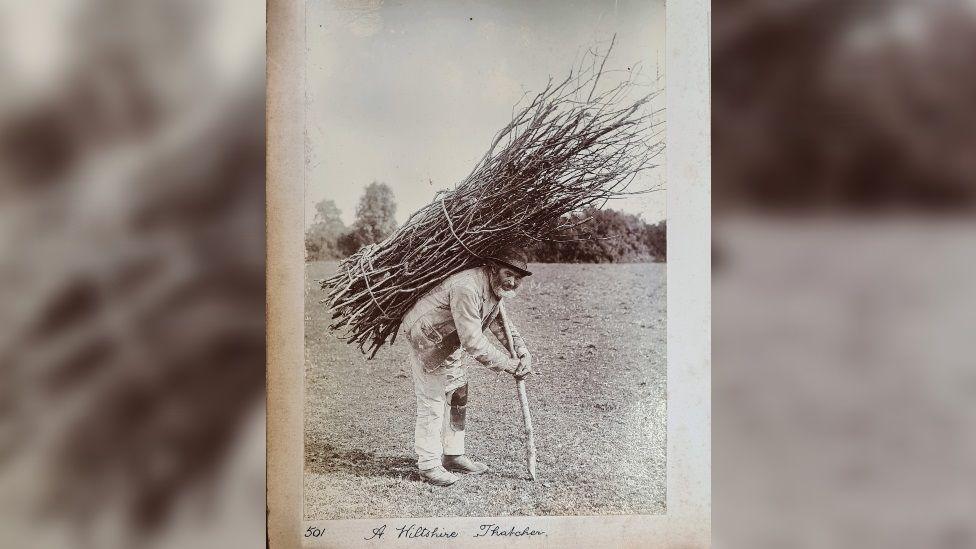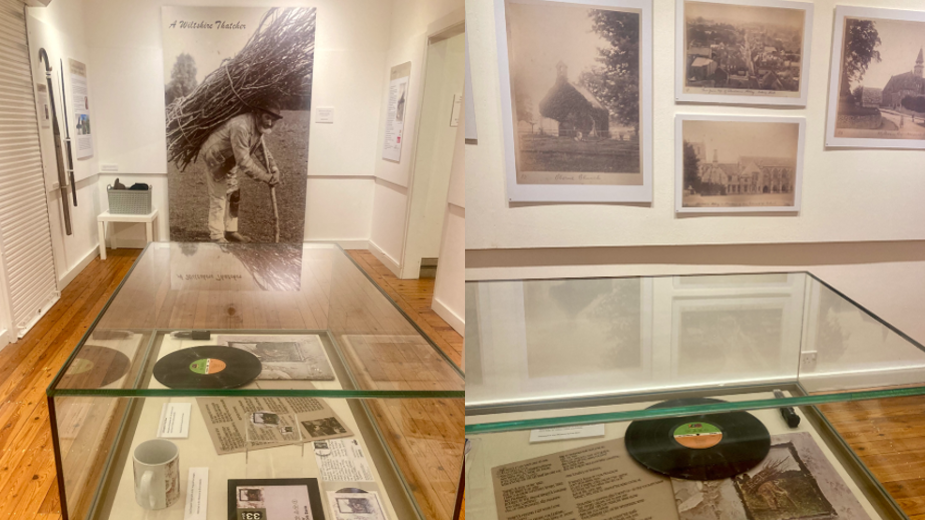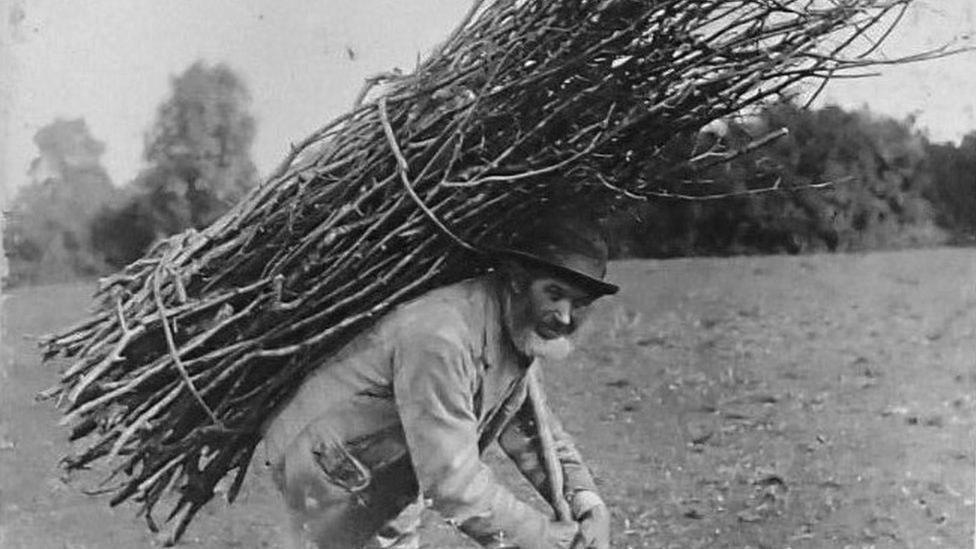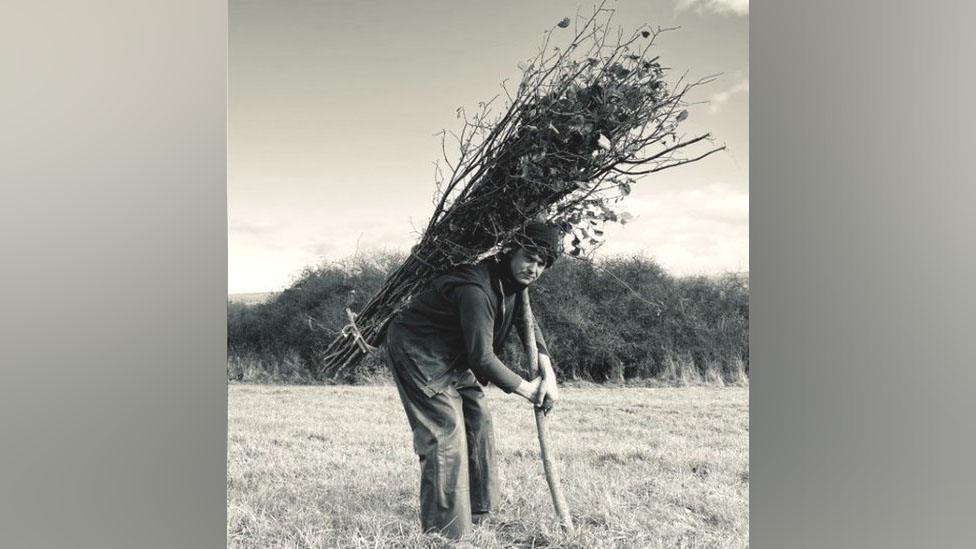Exhibition with photo from Led Zeppelin album opens

The Victorian photograph that features on the Led Zeppelin album cover
- Published
An exhibition has opened featuring a Victorian photograph made famous when it was featured on an iconic album cover by Led Zeppelin.
It was revealed last year that the person seen in the picture was most likely 19th Century man Lot Long from Mere, in Wiltshire, photographed by Ernest Farmer.
He appears to be a thatcher and the original photo was found by Brian Edwards, from the University of the West of England (UWE), when looking through a photograph album for other research.
"I instantly recognised the man with the sticks - he's often called the stick man," he said of the picture, which was later acquired by Wiltshire Museum, where it appears in its latest exhibition., external

Brian Edwards said he instantly recognised the man
Released in 1971, Led Zeppelin IV has sold more than 37 million copies worldwide and includes the hit Stairway to Heaven.
The album's cover art was reportedly discovered by the band's lead singer, Robert Plant, in an antique shop near guitarist Jimmy Page's house in Berkshire.
It is actually a colourised photograph and the original has now been acquired by Wiltshire Museum after being discovered by Mr Edwards.
It is part of an exhibition, external called A Wiltshire Thatcher – a Photographic Journey through Victorian Wessex.

The exhibition is on from 6 April until 1 September
The exhibition has other pictures taken by Ernest Farmer in Wiltshire, Dorset and Somerset, showing landscape, buildings and some people in the 1890s.
Wiltshire Museum's director, David Dawson, said it showed a contrast to what a farmer's life would have been in London at that time.
See Also
- Published8 November 2023

- Published14 November 2023
